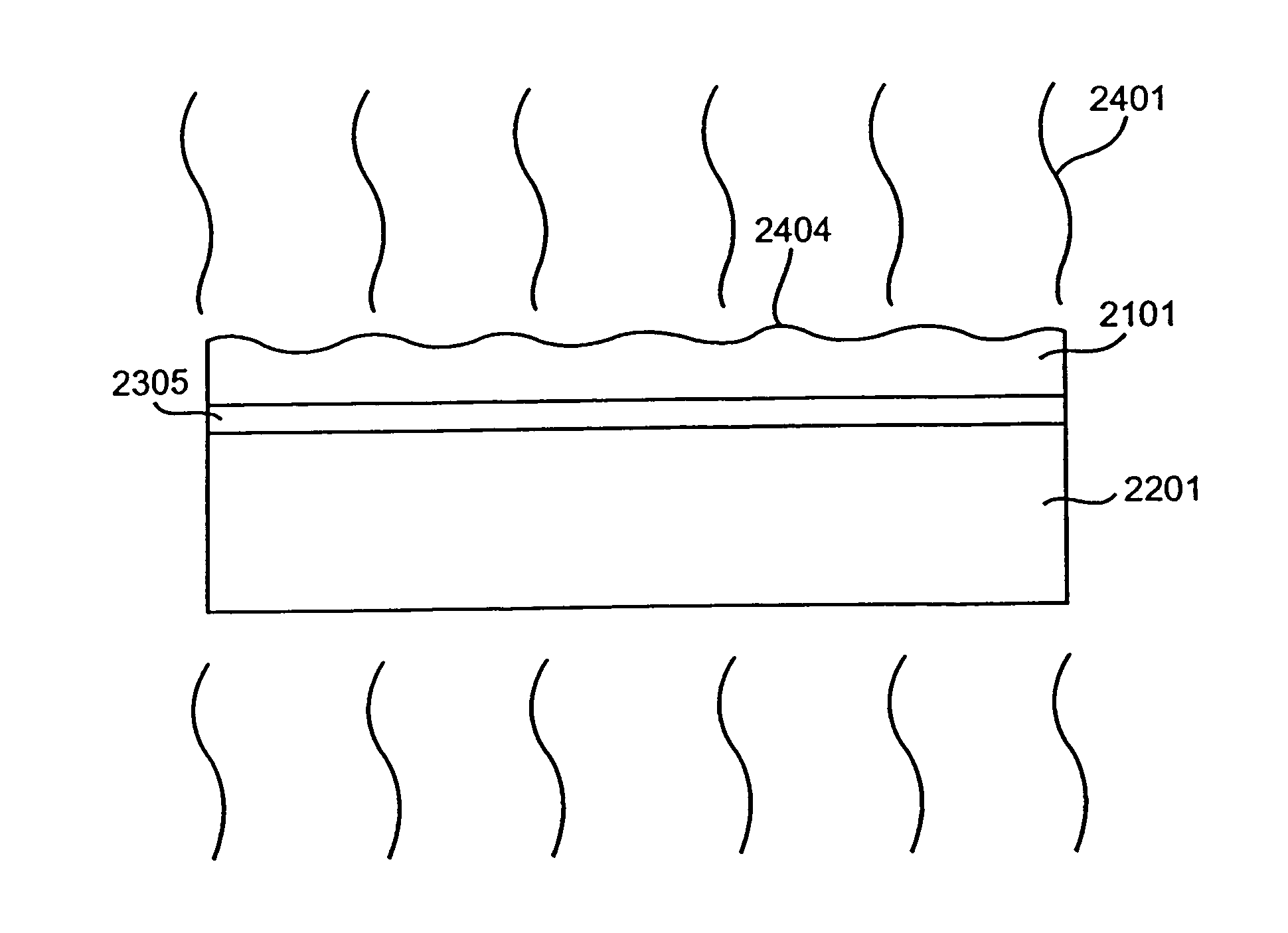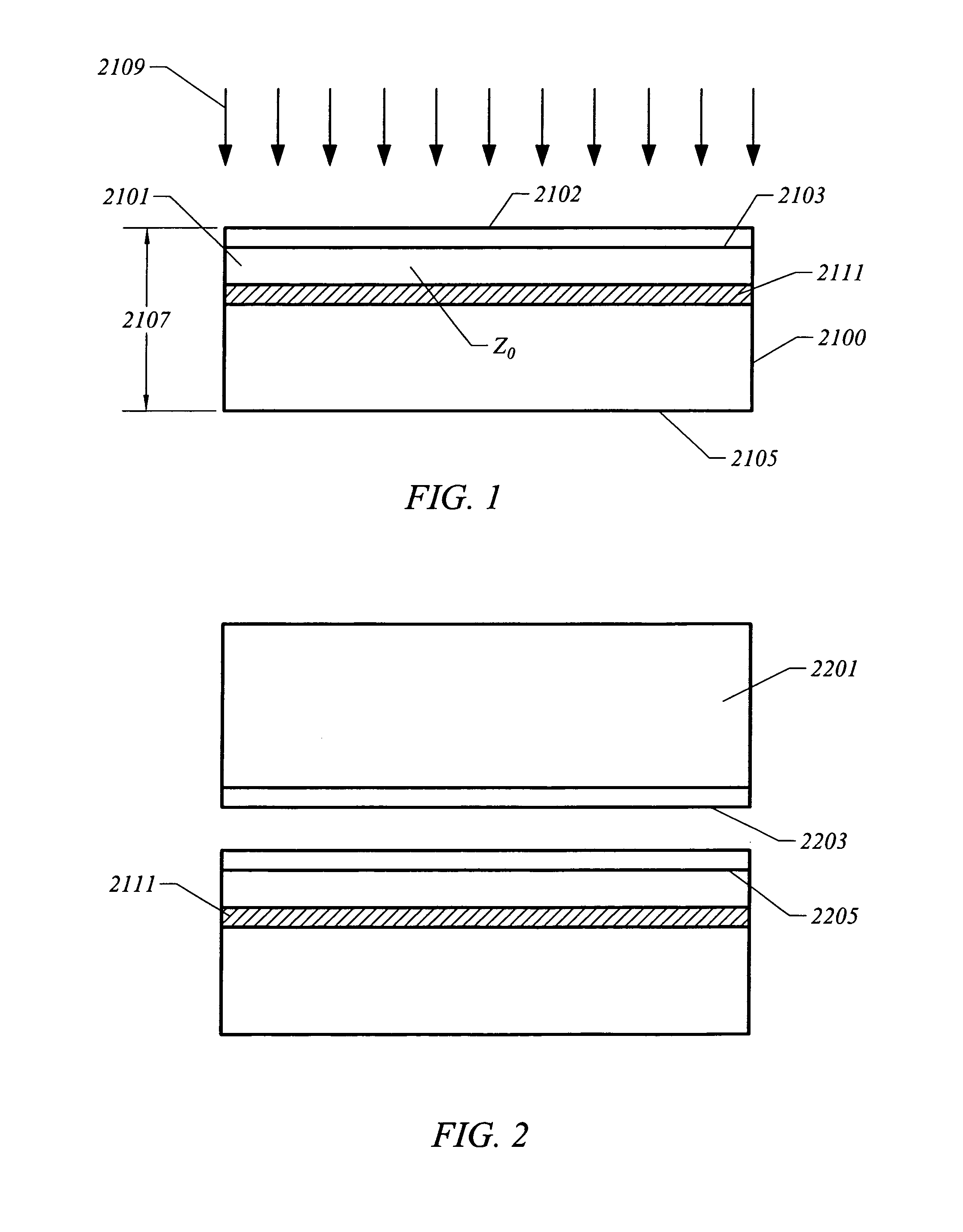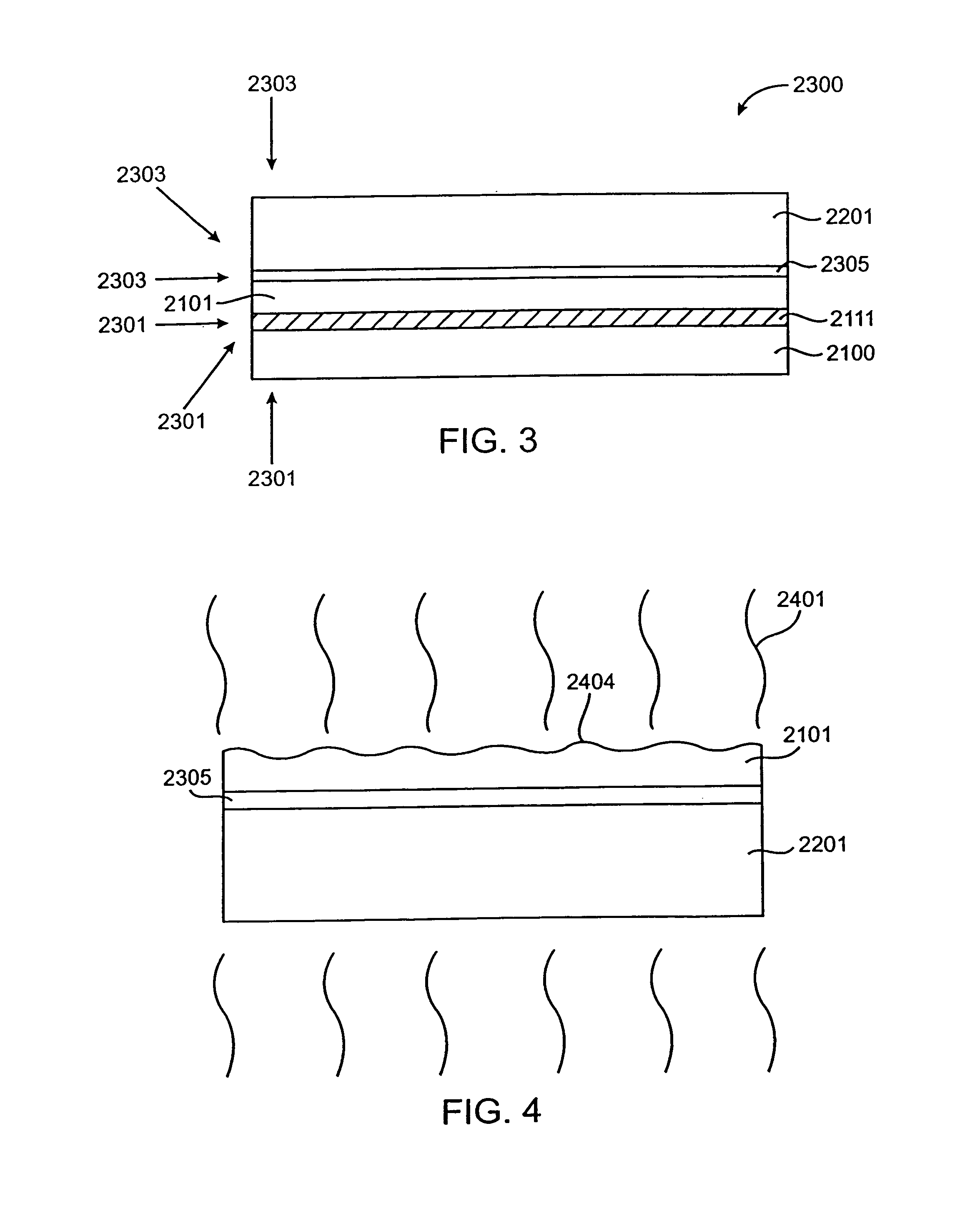Surface finishing of SOI substrates using an EPI process
a technology of surface finishing and soi substrate, applied in the field of manufacture of objects, can solve the problems of limiting the degree of integration achievable in a given chip, conventional isolation techniques consume a considerable amount of valuable wafer surface area on the chip, and the technique is not free from limitations, so as to improve the degree of integration, reduce the predetermined surface roughness value, and improve the crystal structure
- Summary
- Abstract
- Description
- Claims
- Application Information
AI Technical Summary
Benefits of technology
Problems solved by technology
Method used
Image
Examples
Embodiment Construction
[0014]According to the present invention, a technique for treating a film of material is provided. More particularly, the present invention provides a method for treating a cleaved surface and / or an implanted surface using a combination of thermal treatment and chemical reaction, which can form a substantially smooth film layer from the cleaved surface. The invention will be better understood by reference to the Figs. and the descriptions below.
[0015]A process for fabricating a silicon-on-insulator substrate according to the present invention may be briefly outlined as follows:[0016](1) Provide a donor silicon wafer (which may be coated with a dielectric material);[0017](2) Introduce particles into the silicon wafer to a selected depth to define a thickness of silicon film;[0018](3) Provide a target substrate material (which may be coated with a dielectric material);[0019](4) Bond the donor silicon wafer to the target substrate material by joining the implanted face to the target su...
PUM
| Property | Measurement | Unit |
|---|---|---|
| pressure | aaaaa | aaaaa |
| surface roughness | aaaaa | aaaaa |
| surface roughness | aaaaa | aaaaa |
Abstract
Description
Claims
Application Information
 Login to View More
Login to View More - R&D
- Intellectual Property
- Life Sciences
- Materials
- Tech Scout
- Unparalleled Data Quality
- Higher Quality Content
- 60% Fewer Hallucinations
Browse by: Latest US Patents, China's latest patents, Technical Efficacy Thesaurus, Application Domain, Technology Topic, Popular Technical Reports.
© 2025 PatSnap. All rights reserved.Legal|Privacy policy|Modern Slavery Act Transparency Statement|Sitemap|About US| Contact US: help@patsnap.com



